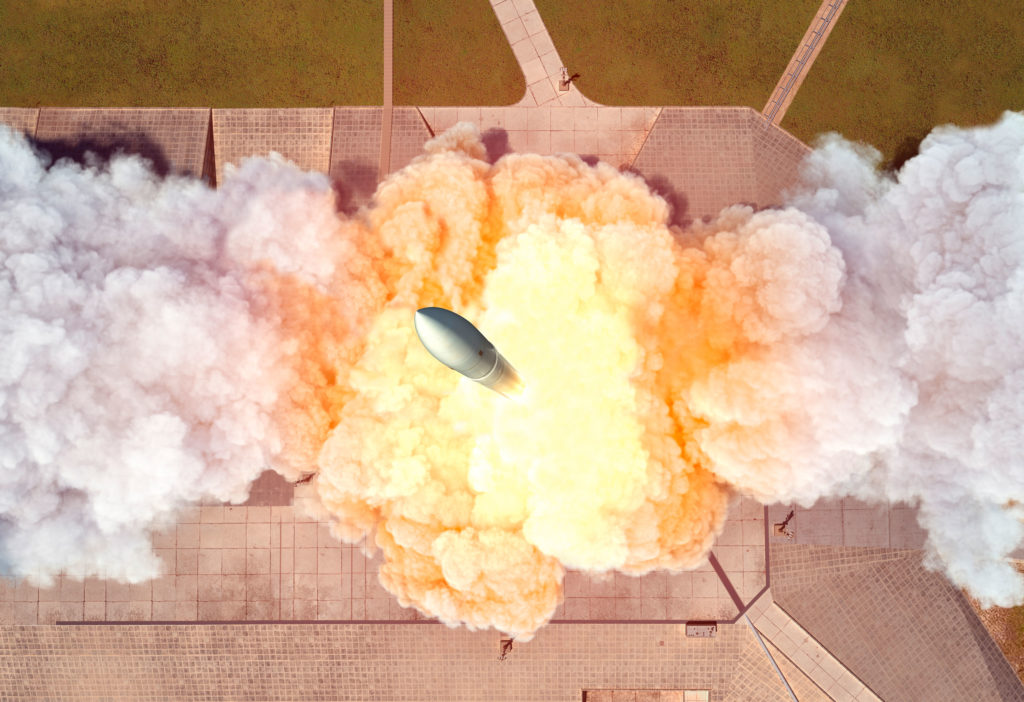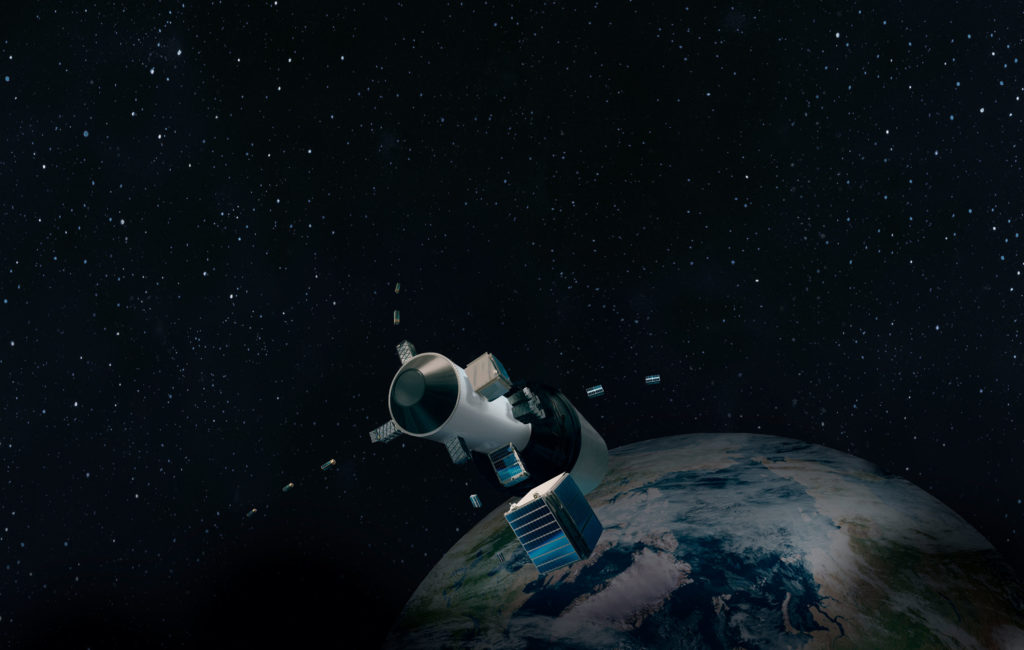This model shows the six most common types of small satellites: PocketQube, 0.25U CubeSat, 1U CubeSat, 3U CubeSat, 12U CubeSat and a 50-kilogram small satellite as well as the stand models of the three German microlaunchers
Until about ten years ago, satellites were mainly large and heavy so that they could carry as many payloads as possible. Most of these satellites were commissioned by government. Today, private space companies and universities are increasingly launching small satellites. It is estimated that more than 15,000 satellites will be launched into space between 2021 and 2030. Approximately 90 percent of these will be small satellites weighing up to 500 kilograms. They are versatile and flexible – used for telecommunication services, Earth observation and climate research or testing new technologies in space. They can also be produced in larger quantities and therefore more economically and quickly than conventional satellites. This opens up a wide range of new opportunities for commercial services and science. Small satellites are therefore a key driver in the dynamic future space market – particularly in the New Space sector. Different classes of small satellites will be exhibited in the model:
- PocketQube (5 cm x 5 cm x 5 cm; maximum mass 0.25 kg),
- 0.25 U CubeSat (11 cm × 11 cm × 2.8 cm; maximum mass 0.4 kg),
- 1U CubeSat (10 cm × 10 cm × 11.35 cm; maximum mass 1.33 kg),
- 3U CubeSat (10 cm × 10 cm × 34.05 cm; maximum mass 5 kg);
- 12U CubeSat (22.63 cm × 22.63 cm × 34.05 cm; maximum mass 20 kg) and a
- Customised 50-kg small satellite.
As satellites are becoming ever smaller and lighter, new launch options must also be created. As a rule, they are launched into space as ‘hand luggage’ together with other larger satellites, whose operators determine the general conditions. To launch small satellites into orbit as the main payload, a separate class of rocket has now been established – the microlauncher. At just under 30 metres long, these rockets are approximately half the size of an Ariane 6. This small launcher market is booming in the US and China. The German start-ups Isar Aerospace Technologies SE (Spectrum launcher), Rocket Factory Augsburg AG (RFA One) and HyImpulse Technologies GmbH (SL1) are entering the space race for Germany with the miniature rocket models (scale 1:xx) in this exhibit and are about to fly their respective microlaunchers for the first time. The German Space Agency at DLR is also promoting this development on behalf of the German government via the European Space Agency (ESA).
Link:
German Aerospace Center (DLR)
German Space Agency at DLR, Department of Robotics, Digitalisation, AI
E-Mail contact-dlr@DLR.de

